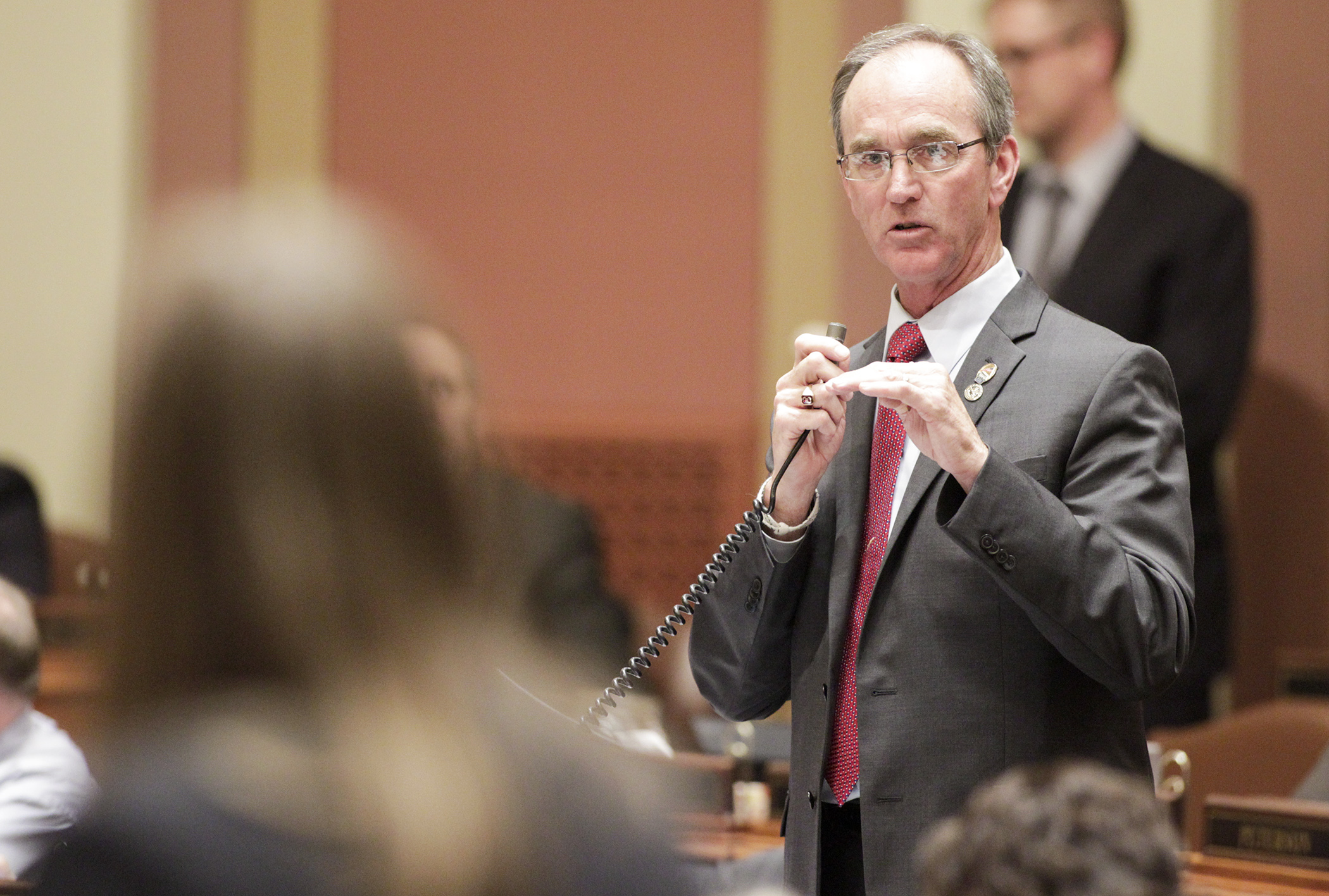House takes second swing at omnibus environment bill

Higher fees for hunting and fishing licenses are in and major changes to the buffer law are out as the House voted 83-51 to pass the omnibus environment and natural resources finance conference committee report late Sunday night.
Passed 42-25 by the Senate earlier in the evening, it now goes to Gov. Mark Dayton for action.
Sponsored by Rep. Dan Fabian (R-Roseau) and Sen. Bill Ingebrigtsen (R-Alexandria), the report on HF771/SF844* would appropriate more than $850 million during the upcoming biennium and contains some of the changes sought by Dayton, who vetoed the initial omnibus environment bill May 12.
“The first bill was vetoed, so we had to roll up our sleeve and work hard with the administration and agencies we have jurisdiction over,” Fabian said.
The agreement includes a number of new fees for hunting and fishing licenses. It would increase the cost of a resident fishing license from $22 to $25, and a deer license from $30 to $34, along with a variety of other increases for nonresident and lifetime licenses.
The Department of Natural Resources and a number of outdoors interest groups had sought the increases to provide new revenue for the dedicated funds meant to support those activities.
Not included in the bill are delays for implementing the controversial buffer law. The date for buffers, or alternative water quality practices, to be in place on public waters would be Nov. 1, 2017, and Nov. 1, 2018, on ditches. The vetoed bill included a two-year delay.
However, the agreement does include a provision that essentially provides an eight-month delay to the 2017 deadline. Landowners who file a compliance plan with their soil and water conservation districts by Nov. 1 would be granted a conditional compliance waiver until July 1, 2018.
Fabian said the bill attempts to create “other alternatives” to buffers for farmers.
“Contrary to popular belief, we are not rolling back water quality standards, we are not gutting the governor’s buffer law,” Fabian said. “We’ve reached an agreement with the governor, we’ve reached an agreement with all the state agencies that are involved.”
The conference committee adopted its report Sunday evening less than two hours before the floor debate began, and several DFL representatives objected to the short notice they’d been given before being asked to cast a vote.
“Nobody has had the time to review this bill,” Rep. Paul Thissen (DFL-Mpls) said. “Our constituents certainly haven’t had the time.”
Rep. Rick Hansen (DFL-South St. Paul) said decisions about natural resources should involve the people’s needs and outcomes in the process and that the bill should be reviewed in the light of day rather than “backrooms” and “basements.” He said the bill did have some things to like, but urged a vote against it nonetheless.
“Although this has become better, we can do better and we should,” Hansen said.
The direct appropriations include:
- Department of Natural Resources – $562.01 million
- Pollution Control Agency - $202.03 million
- Explore Minnesota - $30.01 million
- Board of Water and Soil Resources - $28.47 million
- Minnesota Zoo - $18.53 million
- Metropolitan Council - $17.08 million
- Science Museum of MN - $2.16 million
- Conservation Corps - $1.89 million
- School Trust Administration - $1.1 million
Related Articles
Search Session Daily
Advanced Search OptionsPriority Dailies
Speaker Emerita Melissa Hortman, husband killed in attack
By HPIS Staff House Speaker Emerita Melissa Hortman (DFL-Brooklyn Park) and her husband, Mark, were fatally shot in their home early Saturday morning.
Gov. Tim Walz announced the news dur...
House Speaker Emerita Melissa Hortman (DFL-Brooklyn Park) and her husband, Mark, were fatally shot in their home early Saturday morning.
Gov. Tim Walz announced the news dur...
Lawmakers deliver budget bills to governor's desk in one-day special session
By Mike Cook About that talk of needing all 21 hours left in a legislative day to complete a special session?
House members were more than up to the challenge Monday. Beginning at 10 a.m...
About that talk of needing all 21 hours left in a legislative day to complete a special session?
House members were more than up to the challenge Monday. Beginning at 10 a.m...